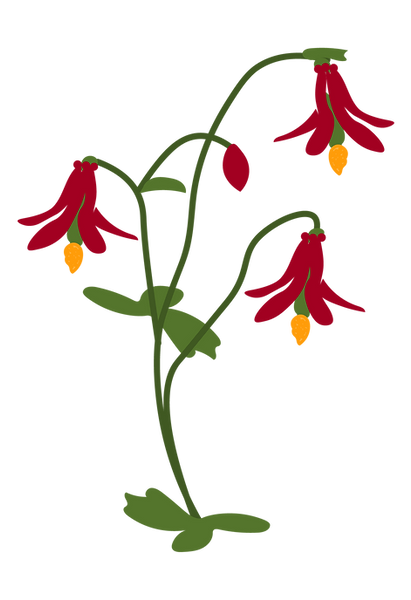
Annual Native Plant Sale
Consider including native plants in your landscaping this spring!

Native Plant Sale & Celebration
March 21st | 10 AM - 3 PM | Pioneer Park, Ferndale
This family-friendly, free event will feature exhibitors and vendors, food and beverages, and a selection of 40 native plants will be available for individual purchase! Join us in celebrating spring and connect with other Native Plant enthusiasts in your community! Plant quantities are limited, arrive on time for the best selection.
Pioneer Park is located at 2007 Cherry Street, Ferndale, WA 98248.


Online Pre-Orders
Online Pre-Orders Are Open Until March 6th
Pre-ordering is perfect if you have a large order you want to place, or can't join the festivities on the 21st. The pre-order minimum purchase is $100. Plants are sold in bundles for pre-order. All plants offered during the online sale will be available during the celebration on March 21st for individual purchase. However, quantities are limited. Order or arrive on time March 21st for the best selection.
Picking Up Pre-Orders
Plant orders can be picked up on Friday, March 20th or at the Celebration March 21st. We do not ship plants.
March 20th Drive-Through Pick-Up
Friday, March 20th, 9am to 3pm, at Nooksack Salmon Enhancement Association: 3057 E Bakerview Rd, Bellingham, WA 98226


Frequently Asked Questions & Notes
Note:
Please keep in mind that we cannot guarantee availability of plants on the list below. We order our plants six to twelve months before the sale and uncontrollable situations, such as crop failure, could prevent us from having all species listed in stock.
What if I want more plants?
If you have made a qualifying order and would like more plants, please place another order using the same customer information. We will combine them when packing.
Can I cancel my order?
If you would like to cancel your order, you must do so by Monday February 23rd. This allows us to return inventory back into stock and make it available to customers during the pre-order window.
No partial refunds or cancellations.
What happens to my plants if I am unable to pick them up?
Unclaimed/abandoned orders will be donated to local restoration projects unless alternate arrangements are made.
Note on plant mortality:
Plants are carefully inspected for viability upon reception by staff. Whatcom CD is not responsible for stock once removed from the pick-up location and there are no refunds for mortality. Depending on site conditions, plant mortality up to 20% is typical and should be expected.
Additional Questions?
Information can also be requested from the WCD office by email plantsale@whatcomcd.org or by calling (360) 526-2382.

The Purpose of the Annual Native Plant Sale
The purpose of the WCD’s annual plant sale is to promote the stewardship and conservation of our natural resources. The plants sold at this sale are “conservation grade," which means they are graded on their ability to survive, not on their ornamental value. Seedling plants are not large (generally between 10” and 36” tall), so your order will fit in the trunk or back seat of your car. On pre-order pick-up day, you can drive through our pick-up event and we will put the order in your vehicle. Pick-ups at the in-person sale will not be drive-through capable. Planting native trees and shrubs can provide many positive benefits to your property and the natural environment such as improved water quality, enhanced fish and wildlife habitat, reduction of wind and soil erosion, cleaner air, reduction of energy costs, and beautification of your property! This sale is a great opportunity to purchase low cost native plants and to get them in the ground before the growing season begins. Experienced conservationists will be available to answer your native plant questions.The event is a self-supporting program of the Whatcom Conservation District with support by volunteers and local businesses.
We hope you will join us and fill your landscape with beautiful, low-maintenance native plants. For more information or to volunteer, email plantsale@whatcomcd.org
or call (360) 526-2375.

Connect With Us Today!
Whatcom Conservation District provides free, confidential site visits that can help you create comprehensive plans for your land. Whether your goals are creating a functional garden or stabilizing steam banks, a qualified professional will come out to your property to discuss options for your unique situation. Additionally, Whatcom CD can help landowners enroll in programs and cover the cost of riparian restoration at some sites. For more information or to request a site visit, simply click the button below.


Additional Links & Info
Rain Gardens
Find out more about Rain Gardens Here
WSU Extension Trees of Washington - Download your free copy with this link
Fire/Drought Resistant Plants Table
Terms:
P = (Plug): Seedling grown in a plastic tube for 1 year. A plant grown as a plug will develop a more fibrous root system than one grown in the field.
BR = Bare root: seedling with soil removed from roots.
Other Districts Plant Sale Pages
Other helpful Native Plant Sites:




